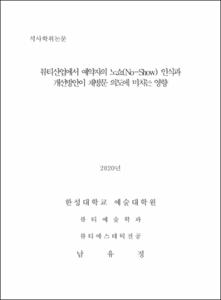뷰티산업에서 예약자의 노쇼(No-Show) 인식과 개선방안이 재방문 의도에 미치는 영향
= Impacts of No-Show Awareness and Improvement Plan in the Customers who make Reservations on their Intention to revisit in the Beauty Industry
- Files in This Item:
-
-
Download
 200000282322.pdf
기타 데이터 / 712.98 kB / Adobe PDF
200000282322.pdf
기타 데이터 / 712.98 kB / Adobe PDF
-
Items in Repository are protected by copyright, with all rights reserved, unless otherwise indicated.